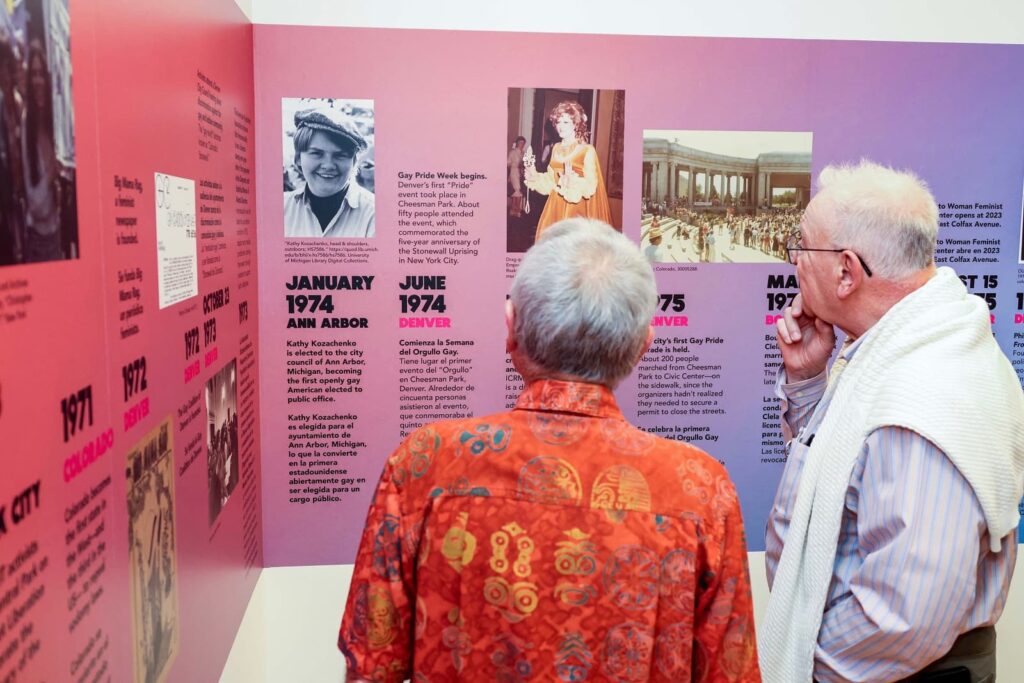
When Tim Gill started the Gill Foundation in 1994, he set out to change Colorado’s trajectory. Amendment 2 had passed two years earlier, writing anti-LGBTQ discrimination into Colorado’s constitution and securing its reputation as the “Hate State.”
Tim’s goal was to turn this tide, beat back Amendment 2, and secure nondiscrimination protections for LGBTQ people, not just in Colorado but nationwide. His philanthropy was always outcome-focused – aimed at specific, measurable wins – but his vision for expanding LGBTQ equality was broad. Even so, I’m not sure he knew just how much history his foundation and Colorado’s LGBTQ community would make over the next 30 years.
Colorado has become one of the most welcoming states in the country for LGBTQ people, thanks in no small part to the influence of Tim and his husband, Scott Miller. Within a generation, Colorado transformed from the “Hate State” to the first state in the country to elect an openly gay governor.
Recognizing the importance of this transformation, in 2019 the Gill Foundation joined forces with History Colorado to document and preserve the stories of the people who made it possible – before a generation’s history was lost. Together we created a new position: a curator who would lead the effort to gather memories, images, and artifacts that tell our state’s story of LGBTQ resistance, pride, and progress.
The result was “Rainbows & Revolutions,” History Colorado’s first-ever LGBTQ exhibit, which opened in June 2022. After its inaugural run in Denver closed in June 2023, I met with Aaron Marcus, the “Gill Foundation Associate Curator of LGBTQ+ History” at History Colorado, to discuss the success of the exhibit’s opening run and the start of its statewide tour in August.
Denise Whinnen: What inspired you, personally, to become involved with preserving the history of Colorado’s LGBTQ community?
Aaron Marcus: What inspired me is being gay and loving history. I wanted to know more because so much of our history isn’t out there. When I was in graduate school, I knew I wanted to do something focused on the LGBTQ community for a paper I had to write. I started working on a written history of what we now know as PrideFest. That took off, and the managing editor of Colorado Heritage Magazine loved it and asked me to adapt it into an article for the magazine. Then, when I was in the exhibits department at History Colorado, I began working on developing it into an exhibit.
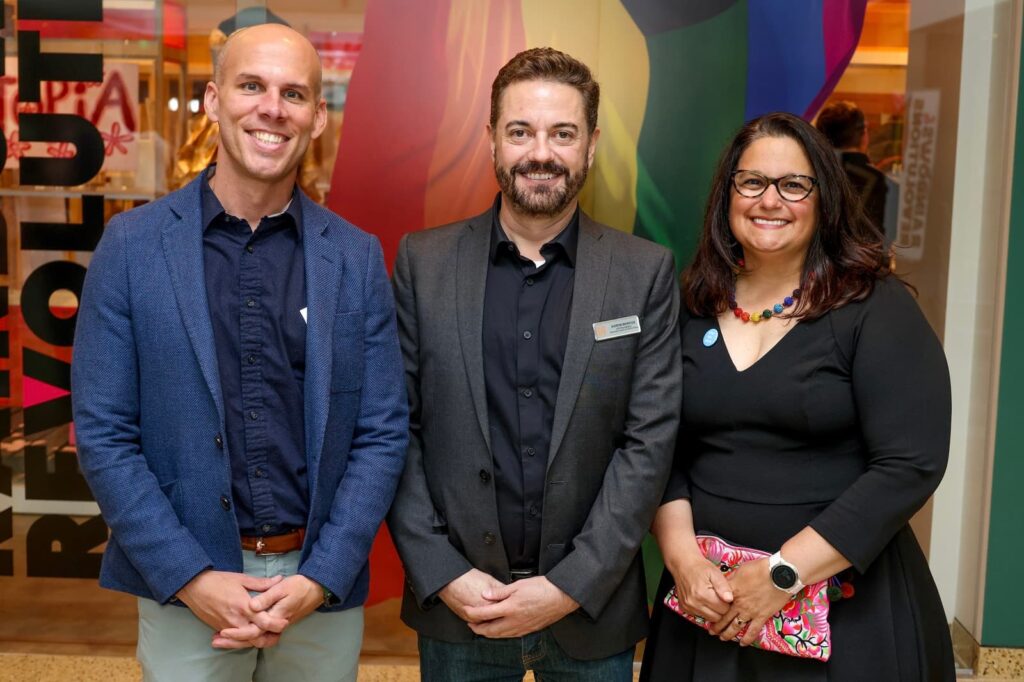
Meaning before the LGBTQ curator position was created in 2019, you had actually started another project documenting Colorado’s LGBTQ history?
Yes, I started on an LGBTQ exhibit back in 2015. I had an advisory board. We did audience testing at PrideFest, asking thousands of people what they wanted to see in an exhibit. Unfortunately, at the time, History Colorado experienced a budget shortfall, and the project had to stop.
Actually, I learned that one of the past curators tried to start collecting this history way back in the 1970s and 80s, if you can believe it. He corresponded with someone in Colorado Springs who was also trying to gather similar stories. So it looks like this work started – but then somebody else took over, and it stopped.
I hope by starting this, it outlives me. I hope when I’m gone, it continues to grow and it isn’t just me or you keeping it going.
That’s our hope too. That’s why we really wanted to invest in this and make sure there’s a lasting record that the LGBTQ population contributed to our state in meaningful ways. An archive for future historians and school kids and everyone in between.
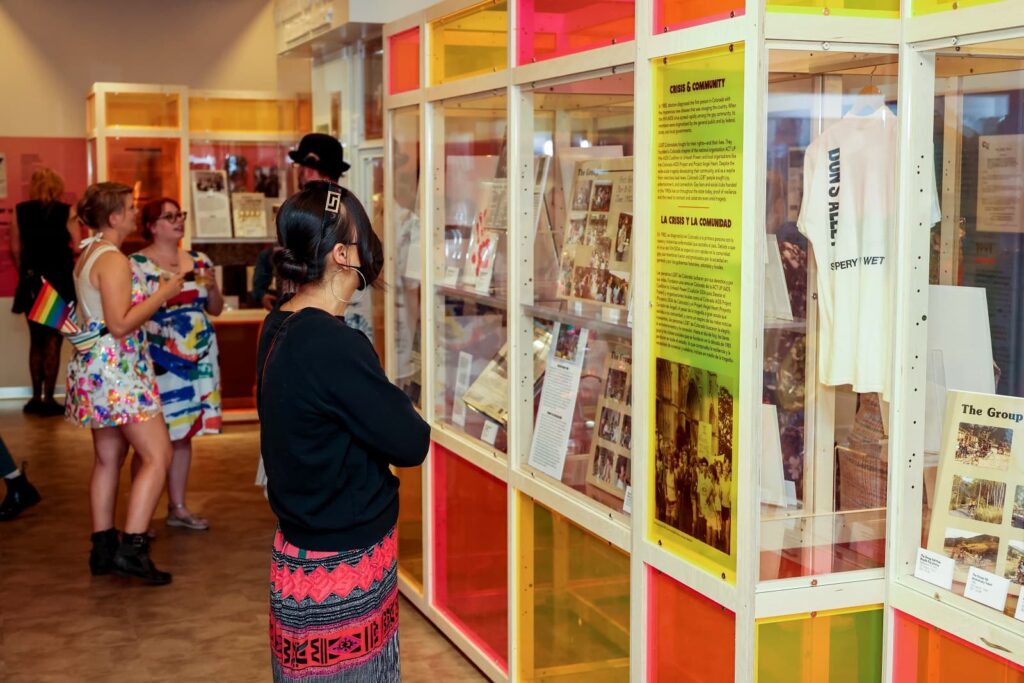
On that note, could you share what sort of significance the exhibit has had in its first year? What it’s meant to the audiences who have visited it in Denver?
Well, for one thing, it’s significant just to have an exhibit like this and a position like mine, specifically dedicated to LGBTQ history. Having them housed in a state institution is significant in and of itself.
The exhibit was originally planned for a 6-month run in Denver, but it was extended more than twice its expected time. I can go on and on about stories of all the people who came to see it – starting on opening day. I heard a story about a preteen who wanted to see the exhibit as soon as it opened. She had her grandmother bring her and her younger sibling on opening day.
Also, just a couple of months ago, one guest came to get in before it closed its Denver run. He asked the front desk where to find it, walked directly there, spent about two hours – and then left. It was the only exhibit he wanted to see, and he read every single word.
In addition to individuals, many organizations have also brought their staff and members to see it because they want them to know the history. It has been amazing how many tours I’ve given.
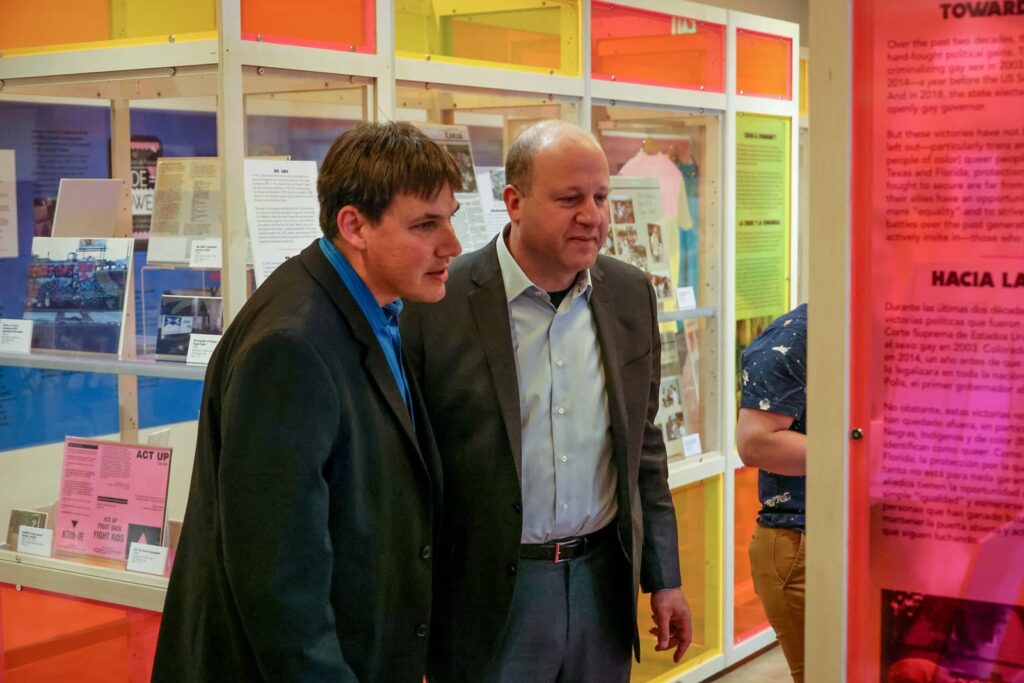
What kinds of organizations have wanted their communities to see Rainbows & Revolutions?
A lot of legal groups. Before the exhibit even opened, the Colorado and Denver Bar Associations hosted an event here to kick off their new statewide inclusivity program. I also gave two separate tours for the Attorney General’s office. I did a Zoom presentation for over 200 people from a huge global law firm with an office in Denver who were interested in this history.
There’s also been a lot of interest from schools. I worked with the chair of the education department at Metropolitan State University on a program for educators about LGBTQ history and its inclusion in the state curriculum. I’ve given similar presentations to local school districts, as well. I even gave a tour for the U.S. Department of Education’s Office for Civil Rights.
I really believe – and I hope people listen when I say this – this exhibit has proven that people want to know this history. They need somewhere to go to learn, and somebody to ask about it. That’s what this exhibit and my position have become in the state. I could probably spend the next year just fielding these requests.
I also understand that there’s been interest in the exhibit from across Colorado – that you’re kicking off a statewide tour after its successful run in Denver?
Yes, it’s the first History Colorado exhibit of this scale that will be traveling around the state. It started in August at the El Pueblo History Museum, and at least three universities want to host it in its entirety.
Something that will change as the exhibit travels is that we want the front section to represent the local history of the community hosting it. For instance, I’ve been speaking with the director of El Pueblo, and their community response has been amazing. They’ve received so many items from people in Pueblo who want to contribute a local element.
I hope that’s a taste of what’s to come – that we’ll have more donations coming in from other parts of the state as the exhibit travels, and we’ll have more interest and more sites that want to host it.
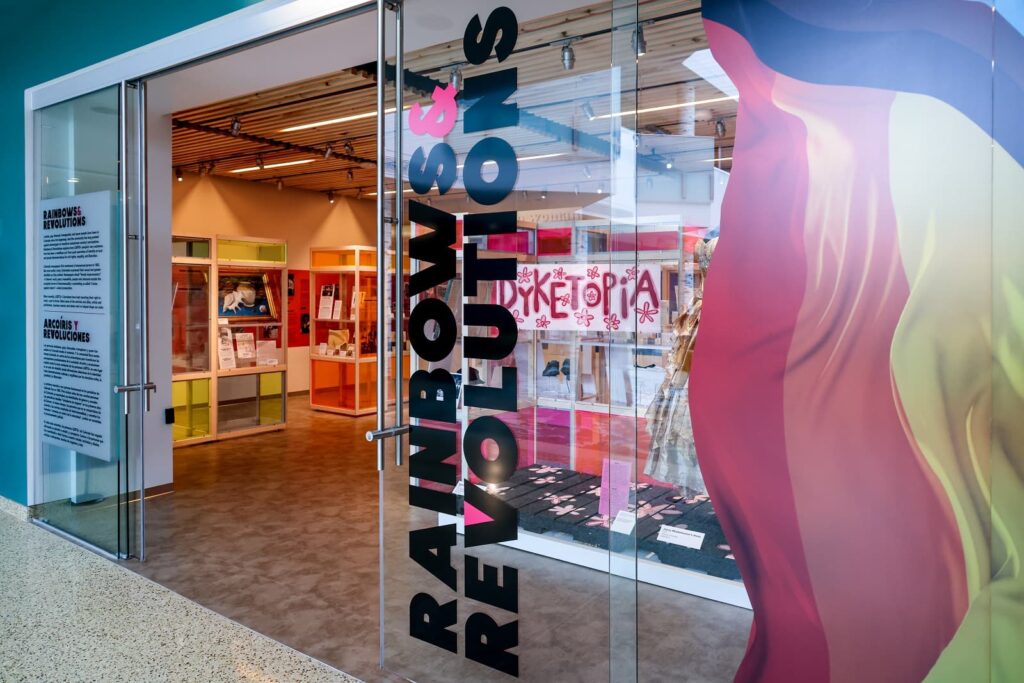
That leads right into my final question: What other hopes do you have for “Rainbows & Revolutions” as it travels across the state, through rural and mountain communities?
Well, first and foremost, I hope people go see it – and I think the response we’ve seen so far suggests that communities across the state will continue to embrace it. And second, I hope it changes minds.
There are some circles out there pushing disinformation about the LGBTQ community. And for some people who are exposed to that, when they hear about this exhibit they might get defensive and not want to engage with it. But I hope they don’t make a judgment call before they see what’s there.
When you see “Rainbows & Revolutions,” you’ll see that it’s just like any other exhibit. It simply tells a community’s history that may not be common knowledge to many. I hope it continues to travel, I hope people see it, and I hope it changes minds.
